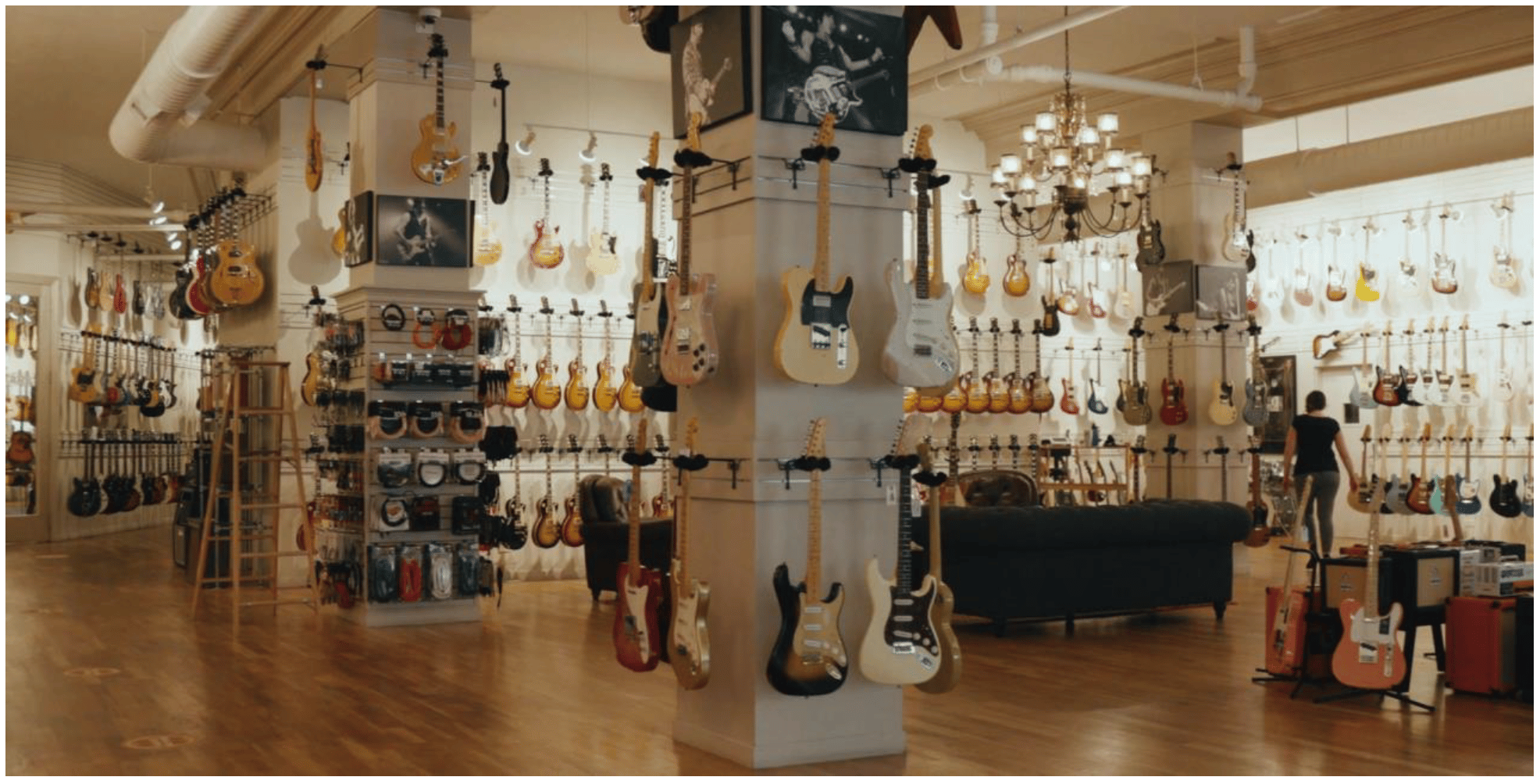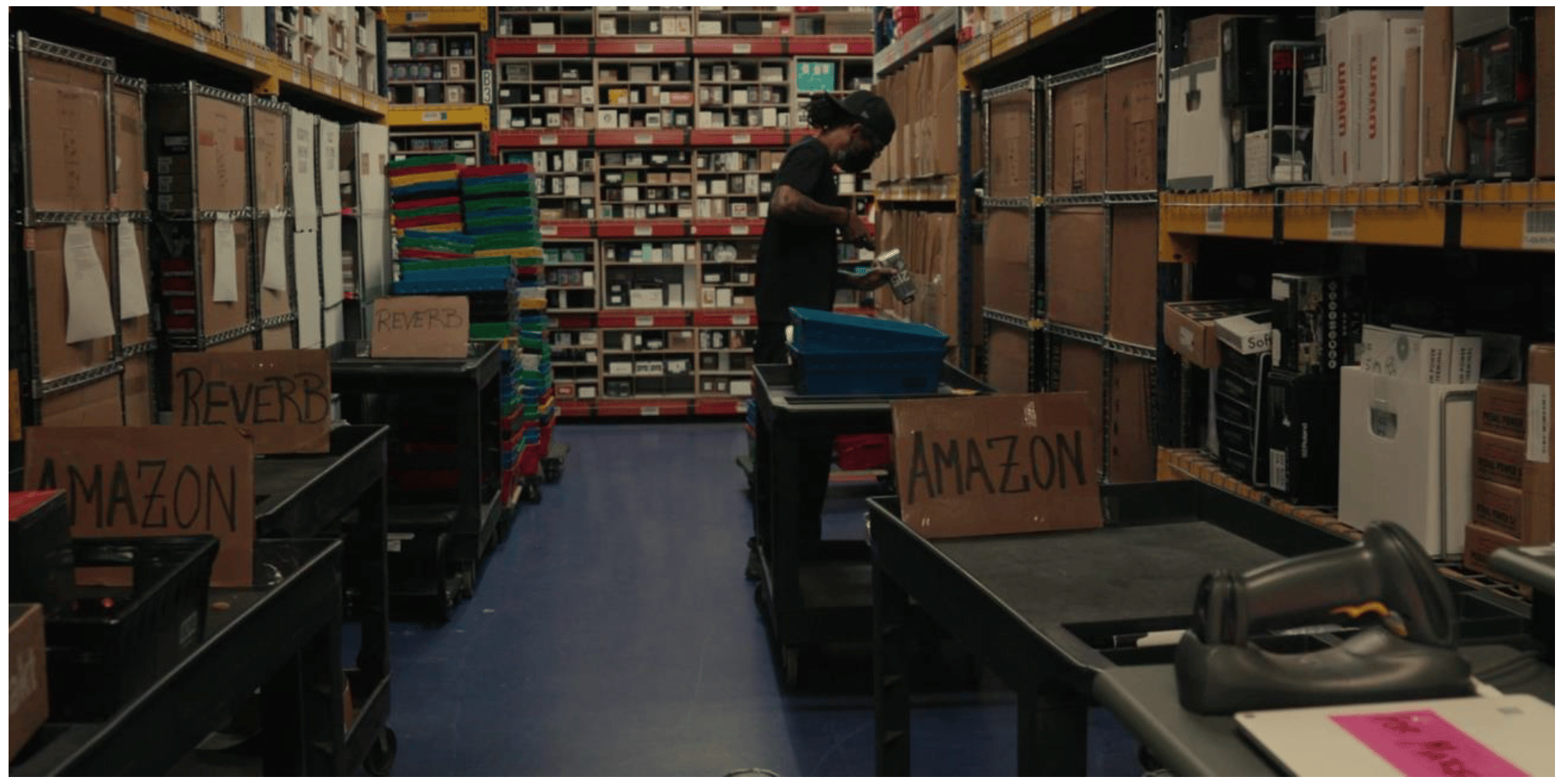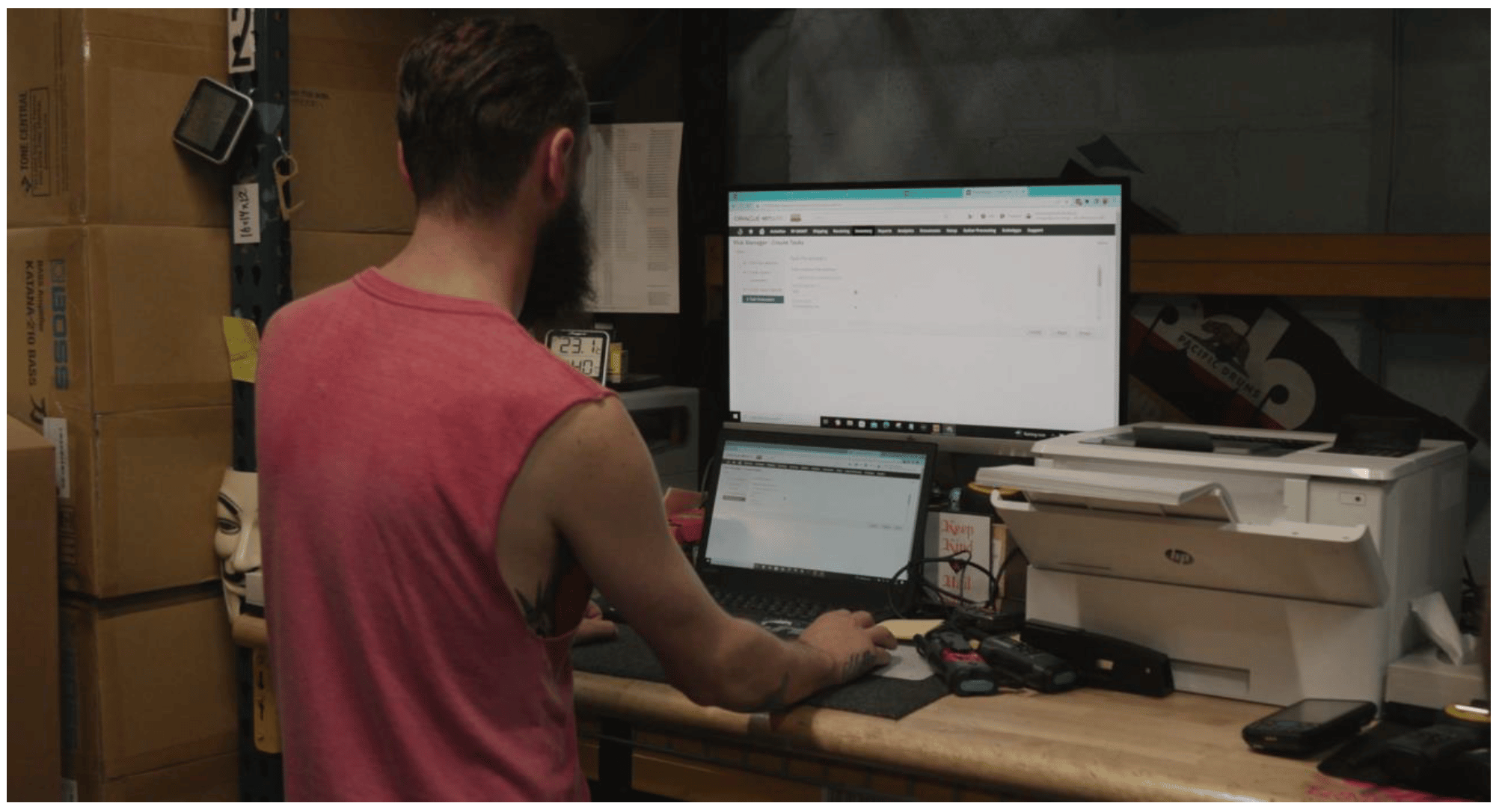
Chicago Music Exchange Fine-Tunes Inventory Management and Ecommerce Operations With NetSuite
Since 1990, Chicago Music Exchange (CME) has been a destination for musicians — young and old, amateur and professional — to celebrate their passion for new and vintage guitars, along with other instruments and gear.
The brick-and-mortar icon of the Windy City music scene creates an unparalleled atmosphere where musicians explore products from the best brands in the business, whether they’re guitar enthusiasts looking for a limited edition or garage rockstars updating their collection of affordable amplifiers. CME also runs a robust ecommerce site and sells on Amazon, music marketplace Reverb and its own app.
CME strives to provide a unique experience, gathering feedback from customers and then partnering with industry titans like Ludwig and Gibson to develop exclusive guitars — a relatively new endeavor that generates some $14 million annually on its own.

Chicago Music Exchange boasts an impressive retail store, plus online sales channels.
Dissonance in Inventory
CME currently stocks 15,000 SKUs to cater to every musician’s dream. As that number grew, the company’s QuickBooks and Lightspeed systems failed to keep up with its escalating inventory management needs.
For example, CME operates a 20,000-square-foot warehouse that employees had to navigate from memory when picking orders. Verifying picking slips manually meant that CME was often missing items or shipping customers the wrong items. In fact, the team had to create a fake order in Lightspeed labeled “can’t find” so it could reserve misplaced inventory and prevent it from being sold.
On the ecommerce side, the team manually created item listings on its site, pulling individual photos from Dropbox and painstakingly saving each to the listing. It also manually updated item availability on the site, and the resulting lag meant that coveted pre-order items frequently oversold.
Andrew Yonke had helped build CME “through sheer grit,” he said, fulfilling orders by hand in the company’s early days. When he officially stepped into the CEO role in 2015, turning CME into an inventory management powerhouse was among his first initiatives — and NetSuite ERP was his first-choice solution to do so.
Fine-Tuning Inventory Management
The first order of business was instating a bin system in the warehouse. Today, CME employees scan incoming inventory into bins, and the item’s quantity and location reflect automatically in NetSuite via an integration with RF-SMART. When it’s time to pick an order, the system tells employees each item’s exact bin location and requires them to scan items out before packing.
The workflow “provides confirmation that as long as items are scanned in correctly, they’ll be scanned out correctly,” said Tom Galvin, system administrator. “It’s increased our inventory accuracy by an insane amount.”
It has also helped make CME’s fulfillment process best-in-class. The company can ship an order within 10 hours from purchase and maintains a 24-hour shipping guarantee.
Beyond the warehouse floor, the guitar processing department uses NetSuite to track an instrument’s location throughout its life cycle: from the initial purchase order to its arrival in the warehouse to its stop in the photography department to its display in the store or online. CME didn’t even attempt this kind of tracking on Lightspeed; it would’ve been nearly impossible, Galvin said.

When warehouse staff scan incoming inventory, numbers automatically reflect in NetSuite.
Making Ecommerce Operations Sing
Gone are the days of manual ecommerce site updates. With NetSuite, the listing process is almost fully automated from the time an item gets photographed. To avoid overselling those pre-order items — or any items, for that matter — CME uses NetSuite to get a real-time snapshot of stock on order from vendors and items ordered by its site’s customers, so it can calculate how much stock to allocate to Amazon and Reverb. Inventory availability on those sites updates seamlessly thanks to integrations via Celigo and NetSuite Connector, respectively.
In an economy that has most businesses hyper-focused on profitability, CME avoids listing items on marketplaces like Amazon if margins will be too low. The team logs item dimensions and weights in NetSuite, and it built a formula that estimates shipping costs accordingly. The system also factors in Amazon fees and automatically stops the listing team from, for example, listing a massive drum kit on Amazon for cross-country shipping.
Amping Up Purchase Decisions
Lately, CME has had to quickly adjust its purchasing practices to fast-changing consumer preferences. In 2020, quarantined consumers picked up guitars en masse, so fewer folks are buying them now. Throw in current economic volatility, and SKUs that formerly sold well aren’t performing like they used to – but other, unexpected SKUs might be gaining traction. The company is constantly placing orders for product, so tracking demand in real time is critical to ensuring it buys products for which demand is high right now.
In NetSuite, CME tracks guitars’ popularity using custom attributes like brand, body style and color. Discovering combinations of attributes that are selling well — in real time — guides purchasing decisions.
And instead of tracking and calculating inventory costs by hand, CME’s purchasing teams run Inventory Valuation Reports to get a clear picture of their on-hand inventory valuation at any point in time. This informs purchasing choices from a financial angle.

Chicago Music Exchange uses NetSuite to track product popularity, real-time demand, and more.
The Next Act
As CME enters its seventh year with NetSuite, Galvin plans to hone his scripting skills so he can further customize workflows in the system. He’ll also further explore the product training available in NetSuite Learning Cloud Support. The overall aim is to save teams even more time and the company even more money, so CME can delight even more guitar enthusiasts nationwide.
Uncovering efficiencies is “what I come to work for,” Galvin said. With NetSuite, “our goal is to streamline, automate and find ways for our employees to be able to do their jobs more efficiently. It’s a fun role.”
Learn more about how your business can optimize inventory purchases with NetSuite.



